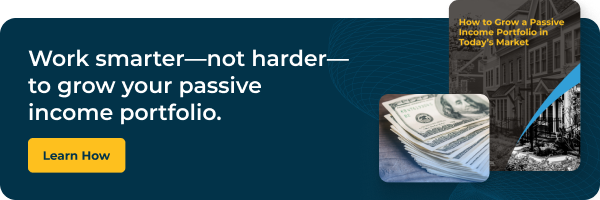For many people, building wealth relies on making smart investments. Serious investors think beyond stocks and bonds to create a diversified portfolio that includes non-correlated assets. If you haven’t yet started investing in non-correlated assets or are rebalancing your portfolio, it might be time to consider branching out into new types of investments.
What Are Non-Correlated Assets?
Asset correlation is essentially the relationship between two types of investments. If they are positively correlated, they typically move together, whether that’s gaining or losing value. If they are negatively correlated, they move in opposite directions. If they are non-correlated, their movements are totally independent of each other, and the price movement of each asset has no effect on the other. A truly diversified portfolio will include an assortment of negatively and non-correlated assets to help reduce the risk of loss if one or more assets perform poorly.
Benefits of Investing in Non-Correlated Assets
The primary aim of diversifying your portfolio with non-correlated assets is to reduce the risk of a potential loss. When one asset is not performing well, others may be able to close the gap. If one or more of your investments is particularly volatile, having non-correlated assets may help you generate more stable returns and help protect you from losses.
Examples of Non-Correlated Assets
Balancing your portfolio with nontraditional investments that are non-correlated to the stock market is one way to mitigate risk and minimize the impact of market swings. Some asset types you might not have considered include:
- Artwork and collectibles: Collecting physical objects that have value also increases the value of your portfolio. Just remember that the value may fluctuate over time, and you also have to maintain the quality of these assets. These are also non-yielding assets, which means you only get returns when the object is sold.
- Precious metals: Based on past performance, gold is traditionally viewed as a smart non-correlated asset to include in a portfolio. It’s also a non-yielding asset, so if your goal is to generate passive income, you’ll need to add other types of investments to your portfolio.
- Digital assets: Cryptocurrency, NFTs, apps, websites, and other digital assets essentially have their own markets. As newer asset classes, these have proven to be volatile markets that not every investor has the tolerance for.
- Real estate: Whether you purchase individual properties to build your portfolio or invest in a trust, the real estate market performs largely independently of the stock market.
- Mortgage funds: Another way to benefit from the real estate market without having to maintain a physical property is through mortgage fund investing. Earn from the interest on loans you fund without having to do any of the work.
- Life insurance settlements: Purchase life insurance policies at a value greater than their surrender value, and gain a profit when the insured passes away and the benefit is paid.
- Music royalties: Generate passive income by purchasing partial rights to an artist’s music and collecting royalties on a regular basis.
- Litigation finance: Provide capital to plaintiffs in exchange for a percentage of the money recovered from the lawsuit.
- Venture capital: Provide angel, seed, or Series A funding to startups and small businesses in exchange for equity.
- Private equity: Invest in private equity firms that buy, improve, and sell businesses. If the business sells at a profit, you get a share that is commensurate with your investment.
Tips for Choosing Non-Correlated Assets
Like any type of investment, it’s important to understand the potential risks and benefits before you take the plunge.
Consider liquidity.
Investments outside of the publicly traded market may not be as easy to sell quickly. Some also lock up your funds for a minimum period of time. If you think you might need access to your cash within a certain period of time, bear this in mind when making investment decisions.
Consider uniqueness.
If you invest in a one-of-a-kind asset, such as a piece of art or an architect-designed building, it may be difficult to find comparable items to put a value on your investment. This can also impact liquidity, especially if you hold out for a specific value and need to wait for the market to shift.
Keep an eye on correlation.
Correlation between assets can change over time, so periodically assess the diversity of your portfolio.
Know your risk tolerance.
Some non-correlated assets provide relatively stable returns, while others have the potential for wild swings. Know your comfort level with this type of volatility when choosing your investments.
Understand economic market influences.
Each type of investment reacts to its own set of influences, so make sure you have an understanding of the best times to buy and sell various types of assets. Some investments are tied closely to oil markets, others to interest rates, and others to broader macroeconomic trends. Know what influences and impacts your potential investment before you take the plunge.
Consider the sponsor.
When you make an investment, understand the sponsor’s role, their fees, and how they get paid so there are no surprises. It’s also important to know if they have “skin in the game” alongside the investor because this can have an impact on returns.
Diversify with a plan.
The whole premise of diversifying starts with doing a little bit of everything. Don’t put all your eggs in one basket. Start small and have a plan to build gradually over time—and stick to it!
Invest in Mortgage Funds with Socotra Capital
If you’re diversifying into non-correlated assets and want to receive regular returns, mortgage fund investing is a good place to start. You invest in a fund that is managed by finance professionals who originate hard money loans to borrowers using equity as collateral. When the loans are repaid, you receive a share of the interest earned in monthly or quarterly dividends.
To learn more about generating income from mortgage funds, read How to Grow a Passive Income Portfolio in Today’s Market.







